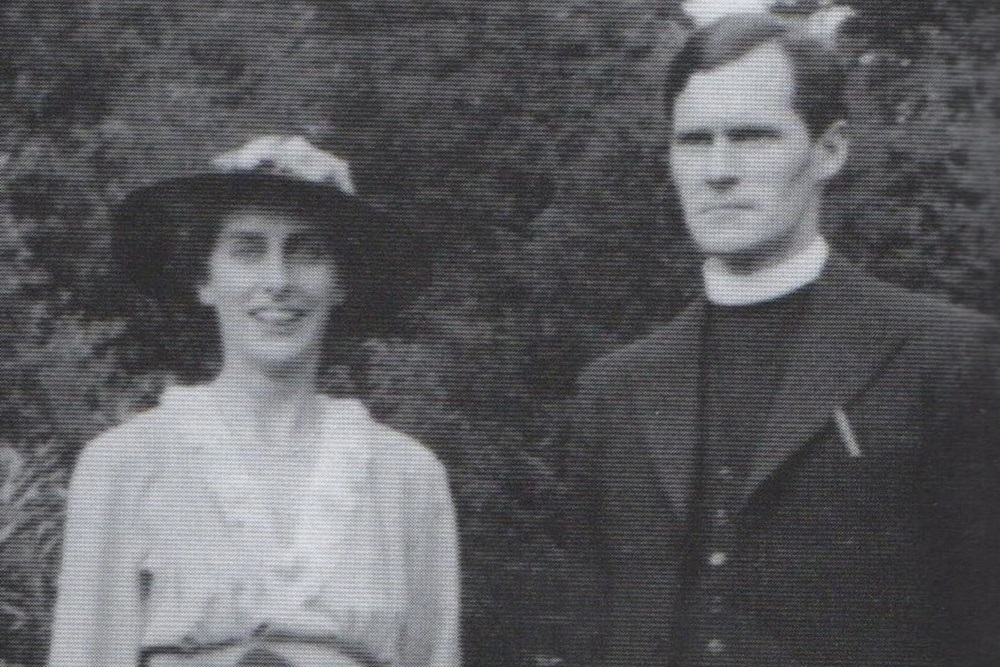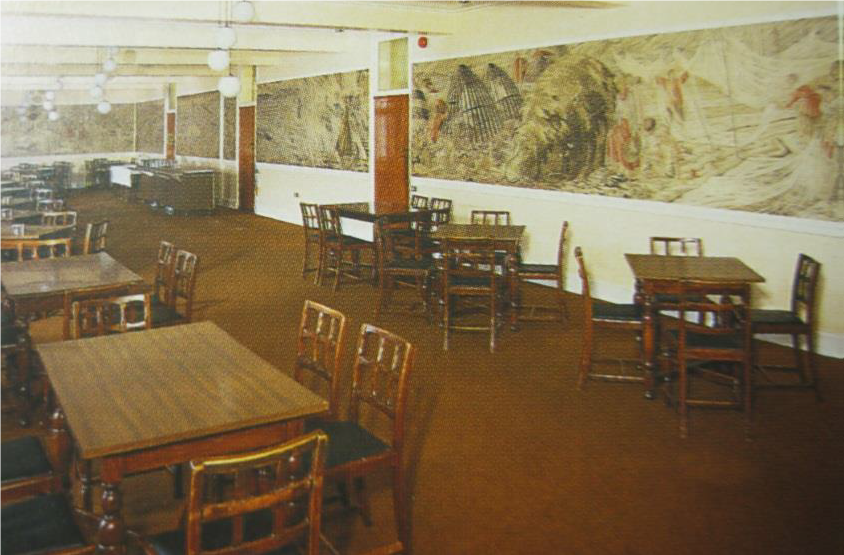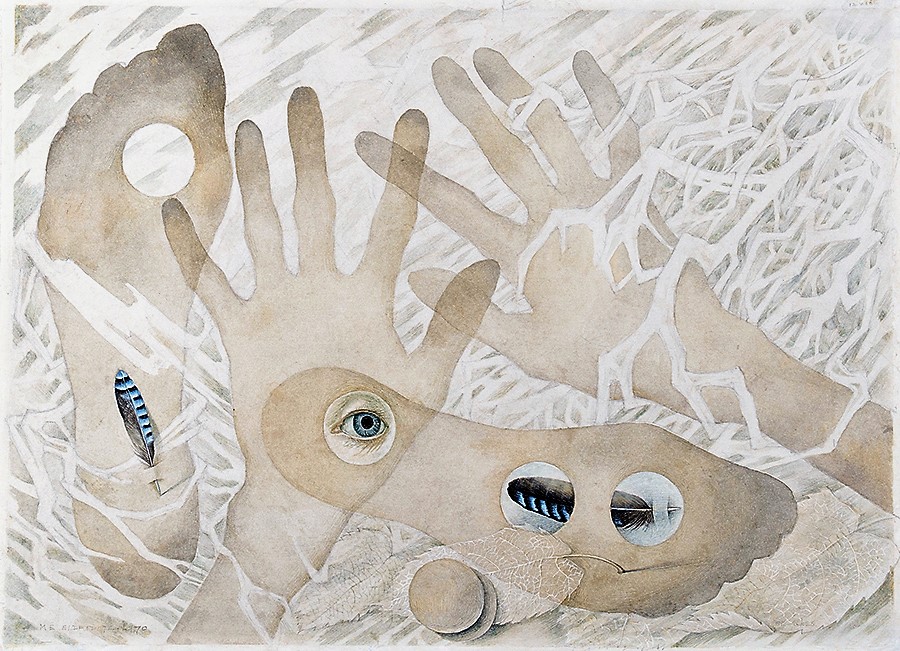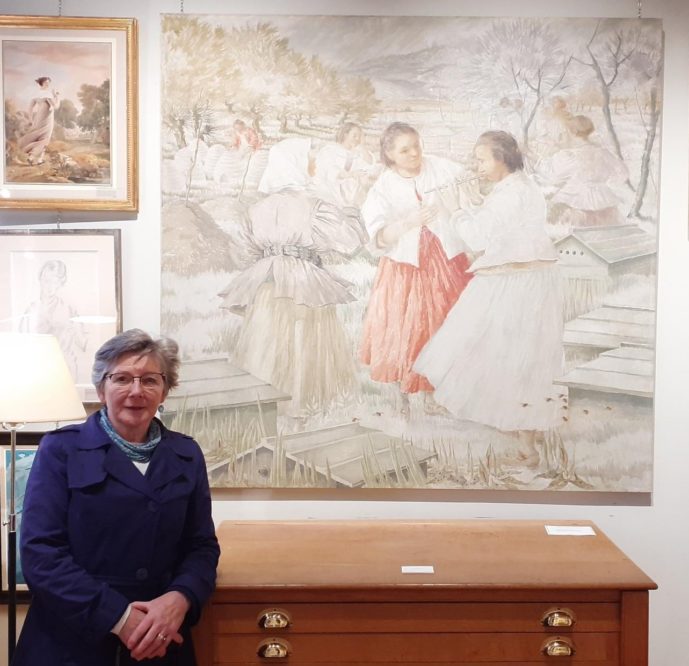From Wimbledon to Wales: an artist’s quest for a rural idyll

Susan Fogarty tells the story of a talented artist and muralist who captured Welsh rural life, married a famous poet and delighted in painting birds.
Mildred Elsie Eldridge, born in Wimbledon in 1909, having graduated from the Royal College of Art in 1933, then travelled and studied in Italy in 1934, left the London suburbs and escaped to the Welsh borders to teach art at Oswestry Girls High School. It was rumoured that she’d had an unwelcome proposal of marriage!
Once in Wales, Elsie settled into a routine of teaching by day and painting in her free time, transforming her sketches from Italy into complete works of art. So it was that in 1937 she had a sell-out one-woman show in London and drove back to Wales in a vintage open-topped Bentley.
Industrialisation
It was around this time that she moved into a lodging house in Chirk, where she met the young curate and aspiring poet RS Thomas. He shared her concerns about the industrialisation of the countryside and the loss of traditional Welsh communities and ways of life.

In 1940 they were married, he had his second curacy and she relinquished her teaching job. Britain was at war and a national arts project “Recording Britain” grew out of the fear that German bombs would destroy not only towns and cities but the ‘British way of life’.
Many artists, unable to go to war, focused on painting buildings; Elsie however was more concerned with the changing cultural landscape. Her paintings captured, amongst other things, Montgomeryshire men and women cutting peat in the moors, baptisms in the River Ceiriog, fishermen in coracles and a Cymanfa Ganu in a Welsh chapel.
Though few ofher works were included in the four volumes of “Recording Britain,” twenty or so of her watercolours for the project are in the archive at the Victoria & Albert Museum. Similarly in 1949 Clough and Amabel Williams-Ellis edited South Wales and Monmouthshire: Visions of Wales illustrated by Elsie.
‘Paradise’
In 1942 Elsie and Rev. Thomas moved deeper into the moorlands and remote hill farms of Wales, to the parish of Manafon. She described as ‘paradise’ the rambling Georgian rectory, with oil lamps instead of electricity and water from an outdoor handpump.
She applied herself to creating hundreds of illustrations for children’s books and botanical illustrations for Culpepper’s Herbal Remedy books. Their only son Gwydion was born in 1945.

It was here in 1950 that she saw the opportunity to achieve an ambition, for which she had been trained at the Royal College of Art, namely, to be a mural artist. In the newly built nurses dining room at the Robert Jones and Agnes Hunt Orthopaedic Hospital near Oswestry, there was an expanse of wall space waiting to be filled, whilst in her large home, she had an expanse of wall space in the empty bedrooms to create a studio, where she could hang the five feet high canvases that would eventually total one hundred feet in length.
It was to become her great masterwork entitled The Dance of Life.
In 1954 before the mural was completed, her husband successfully applied to be vicar in Eglwysfach, where the vicarage rooms were much smaller, and the light was subdued by the surrounding trees.
So, with a heavy heart she drove to the new vicarage with Gwenno the goat in the back of the Austin Traveller.

Her ability to adapt her art to her circumstances is quite remarkable. Whilst RS was now focusing his binoculars on the birds in the estuary, Elsie focused her paint brushes on the birds on her canvasses, adding exquisitely detailed studies of feathers, eggs, and the insects the birds fed on.
She produced hundreds of detailed studies of the flora and fauna for Medici cards: birds, mice, hedgehogs and plants, anything and everything that was living in her corner of Wales, capturing “Heaven in ordinary’ as George Herbert wrote.
Though they were in Eglwysfach for nearly 13 years, RS Thomas was never particularly happy there, serving a congregation largely made up of British ex-military personnel, whom he derided as “living cheap on dear things”.
No letting up
So it was, they moved to his final parish centred around the small coastal fishing village of Aberdaron in 1967. Another oversized rectory provided Elsie with a another studio and the quality of light that you find next to the sea.
By this time Elsie was approaching pension age but showed no signs of retiring, though she did give up two things that had been constant threads in her life’s work.
Firstly, teaching art and art history as part of extra mural studies at night classes, schools and colleges overseen by Aberystwyth University. Secondly, sending her paintings every year to the Royal Watercolour Society Exhibitions in London.

A rural idyll
When RS retired from ministry in 1978, they were obliged to leave the vicarage and move to the centuries-old long house, Sarn y Plas, which they had previously secured with a life-time’s lease. Elsie was now reduced to painting in the most cramped conditions ever, with the smallest of windows. Her ‘Studio’extension that she had built in the late 1960’s was now given over to RS as his ‘Study’ to write poetry.
Though the fine quality of her art was declining, she went on in the 1980s to have two children’s books published by Medici, originally made for her grandson Rhodri.
‘Death came for the last dance’ as RS wrote, on 10th March 1991.
Posthumous success
The RS Thomas & ME Eldridge Society was created in 2017, to acknowledge the ‘convergence of creativity’of the famous poet and the less well-known artist, who influenced his poetry early on. Elsie, who chose to work in the so called ‘shadow’ of her famous husband, was said by Gwydion their son “to have created as many works of art as RS wrote poems”.

In December 2023, 90 years after Elsie painted her RCA graduation piece “Music: Telling the Bees”, it came out of the so called ‘shadows’ into a London art gallery, for sale at £40,000.
In June 2024 there is an exhibition The Spiritual Works of Art of ME Eldridge as part of the 10th Poetry & Arts Festival in Aberdaron, north Wales.
The theme of the festival this year is “Spiritual Writers” featuring amongst other things RS Thomas, hymn writers William Williams Pantycelyn and Ann Griffiths, as well as Rev Jim Cotter and Scottish poet and writer Edwin Muir.
The Saturday concert Poems from the Soul: Twelve of the great Hymns of Wales, is drawn from the new book by M. Wynn Thomas of the same title.
You can find out more about both the festival and the society here.
Support our Nation today
For the price of a cup of coffee a month you can help us create an independent, not-for-profit, national news service for the people of Wales, by the people of Wales.




